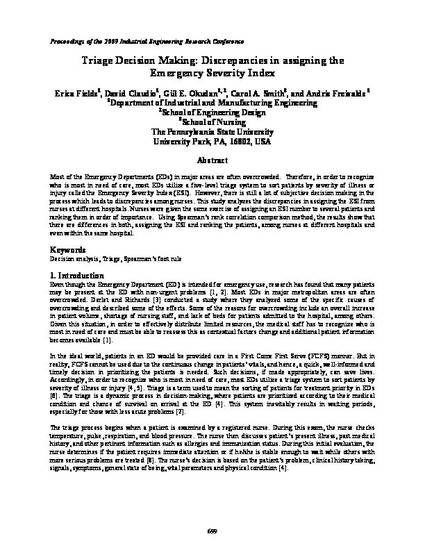
Presentation
Triage Decision Making: Discrepancies in assigning the Emergency Severity Index
IIE Annual Conference
(2009)
Abstract
Most of the Emergency Departments (EDs) in major areas are often overcrowded. Therefore, in order to recognize who is most in need of care, most EDs utilize a five-level triage system to sort patients by severity of illness or injury called the Emergency Severity Index (ESI). However, there is still a lot of subjective decision making in the process which leads to discrepancies among nurses. This study analyzes the discrepancies in assigning the ESI from nurses at different hospitals. Nurses were given the same exercise of assigning an ESI number to several patients and ranking them in order of importance. Using Spearman’s rank correlation comparison method, the results show that there are differences in both, assigning the ESI and ranking the patients, among nurses at different hospitals and even within the same hospital.
Keywords
- Decision analysis,
- Triage,
- Spearman’s foot rule
Disciplines
Publication Date
2009
Comments
This is a proceeding published as Fields, Erica, David Claudio, Gül E. Okudan, Carol A. Smith, and Andris Freivalds. "Triage decision making: Discrepancies in assigning the emergency severity index." In IIE Annual Conference. Proceedings, p. 699. Institute of Industrial and Systems Engineers (IISE), 2009. Posted with permission.
Citation Information
Erica L Fields, David Claudio, Gül E. Kremer, Carol Smith, et al.. "Triage Decision Making: Discrepancies in assigning the Emergency Severity Index" IIE Annual Conference (2009) Available at: http://works.bepress.com/gul-kremer/167/
